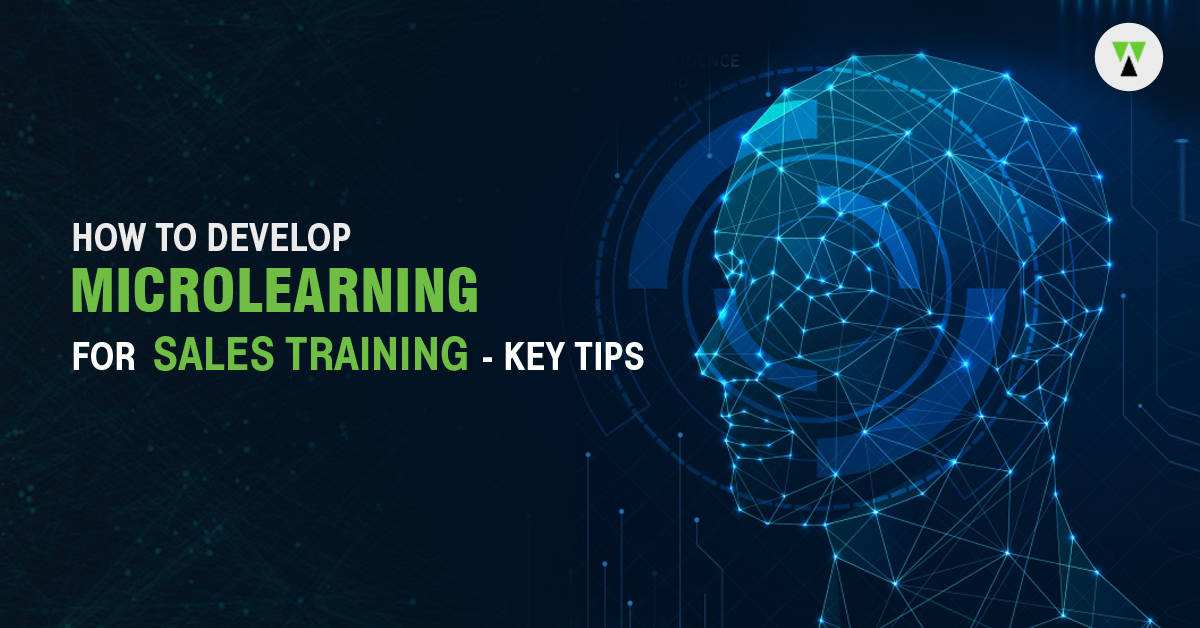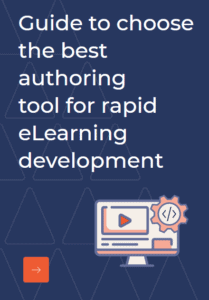How often have you put off things, just because it may take up more time? People in general look for options that are faster and more relevant, rather than opting for long and tedious ones unless there is no other way out. This applies more pertinently in case of learning/training endeavors.
Sales training has always been slightly challenging owing to the ever-growing competition, speed at which new products are created and pushed to the market, the ever-changing scenario in terms of marketing and the global influences on the market. While eLearning offers a wide range of options in terms of delivering knowledge that is up-to-date and accessible anywhere and at any time, sales training calls for learning that is precise and concise to assist the sales professionals at the point of need. This makes Microlearning a good choice owing to its agile nature and many other properties. We have previously discussed a lot about microlearning in general, i.e. right from what Microlearning is to How to Use Microlearning As a Part of The Learning Strategy , the 8 Questions You Need to Ask for Creating Effective Microlearning and more. But, the focus in this post is sales training.
Here are the key tips on how to develop microlearning for sales training (not in terms of the development stages but rather the content design side of it).
Tip 1# Stay Relevant
The approach for Sales training may not be that different, but unlike other trainings, staying relevant or sticking to the learning objectives is the key here. The storyboard for sales training should focus on splitting each key objective into each module, rather than clubbing it all into one. This can help the sales professionals to gain clarity about the topic that is relevant at the point of need, without touching base upon topics from the introductory level and covering the whole nine yards before getting to the key points
Tip 2# Target Change in Micro-behaviour
Microlearning stands for small nuggets and hence, rather than expecting a holistic change from it, aim for changes in micro-behavior. This can be a good way to help the sales professionals to take in feedbacks in a constructive way and promote creative thinking. This approach can help in creating good attitude towards the sales function within the new hires too.
Tip 3# Add Interactions
Big or small, a learning module with interactions can make a positive difference. Microlearning doesn’t give much scope for boredom owing to its shorter size and concise content. However, micro interactions like answering a pop-up question in between, or just pressing like button at the end of the course allows the learners to be involved in the process rather than just being passive learners.
Tip 4# Use Videos, Infographics, etc.
The sales function is dynamic but can be a tad bit mundane in terms of the content itself. Hence, utilizing multimedia elements like videos, infographics, demos, etc. and converting the structured reference documents into more visually engaging outputs is a good way to go about. Interactive infographics, game-based assessment are other interesting choices when it comes to creating effective microlearning for sales training.
Tip 5# Include Real-World Examples
Sales include face-to-face interactions and scenarios that keep differing, often influenced by people, the corporate culture, requirements, awareness and so on. For microlearning to be really effective, it is always good to incorporate storytelling like an approach and include real-world examples allowing the learners to really understand the challenges of their roles and learn how to improvise, cope and act in accordance to the situations from shared experiences.
Tip 6# Practice Makes Perfect
We are talking about training reinforcement here. While the main focus of microlearning is always performance support, it is also a great tool for reinforcing learning or quick revisions. Microlearning in the form of interactive-assessment or decision-making scenarios etc. can aid the learners to practice over and over until they are confident enough.
Sales function in itself can be challenging. Engaging with potential clients, discussing the pros and cons of the solution or product being sold, convincing them to keep the talks open and gaining their trust, capturing their interests and so on, all fall under the job description. While training can cover many aspects, real learning takes place in the actual field of work. The key to effective training, however, is to include Knowledge-checks, to ensure that the employees have mastered key concepts, include real examples to make the sales professionals aware about the actual challenges and to deliver on-time learning for when the learners need a quick review.
What are your thoughts on Microlearning? Is your Sales team well trained? Would you be interested in exploring the possibilities that microlearning offers? If you need assistance with the same, you are at the right place. Just drop us a message and we will be happy to assist you.



